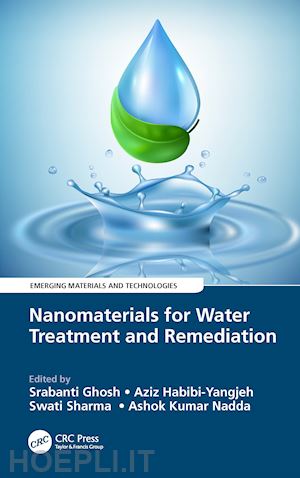Srabanti Ghosh received her PhD in Chemistry from UGC-DAE Consortium for Scientific Research, Kolkata Centre, and Jadavpur University, India and completed postdoctoral programs at the University of Paris SUD, France (Marie Curie Cofund). She also worked as a CSIR-SRA (Scientists' Pool Scheme) in Central Glass and Ceramic Research Institute, Kolkata, India. She worked as GOT ENERGY TALENT (GET) Cofund Marie Curie Fellow Researcher (MSCA COFUND) at the Universidad de Alcala, Spain. She has co-authored 64 publications in international scientific journals, 1 patent and 72 contributions to scientific conferences. She contributed 16 book chapters covering the large fields of polymer, nanomaterials, and photocatalysis, and edited 3 books. Her current research work is focused on nanohybrid materials, conducting polymer nanostructures for solar light harvesting, photocatalysis applications. Aziz Habibi-Yangjeh received his PhD degree in Physical Chemistry from Sharif University of Technology, Tehran, Iran, in 2001. He is currently full Professor of Physical Chemistry at the University of Mohaghegh Ardabili, Iran. His research interests include preparation of different heterogeneous visible-light-driven photocatalysts based on zinc oxide (ZnO), titanium dioxide (TiO2), and graphitic carbon nitride (g-C3N4) and their applications in different fields specially wastewater decontamination and photofixation of nitrogen. He has published more than 195 JCR papers including five review papers, nine highly cited papers, and five hot papers. Moreover, he is on the editorial board of three international journals. He contributed three book chapters in the field of photocatalysis. He has supervised more than 30 M.Sc. and Ph.D. students in Physical Chemistry. Swati Sharma has completed her PhD. from University Malaysia Pahang, Malaysia. She worked as a visiting researcher in the College of Life and Environmental Sciences at Konkuk University, South Korea. Dr. Sharma has completed her M.Sc. from Dr. Yashwant Singh Parmar University of Horticulture and Forestry, Nauni Solan H.P. India. She has also worked as a program co-coordinator at the Himalayan Action Research Center Dehradoon and senior research fellow at India Agricultural Research Institute. Dr. Sharma's research is in the field of bioplastics, hydrogels, keratin nano-fibers and nano-particles, biodegradable polymers and polymers with antioxidant and anti-cancerous activities and sponges. Ashok Kumar Nadda is Assistant Professor in the Department of Biotechnology and Bioinformatics, Jaypee University of Information Technology, India. He completed his Ph.D. in Biotechnology from the Department of Biotechnology, Himachal Pradesh University, India. He worked as a postdoctoral fellow in the State Key Laboratory of Agricultural Microbiology, Huazhong Agricultural University, China. He also worked as a postdoctoral research associate at Konkuk University, South Korea. Dr. Ashok has a keen interest in microbial enzymes, immobilization of enzymes, nanobiotechnology, biocatalysis, wastewater management, biomass degradation, biofuel synthesis, and biotransformation. Dr. Ashok has published 58 research articles, 23 book chapters, and 5 books. He is also a member of the editorial board and reviewer committee of the various journals of international repute.











